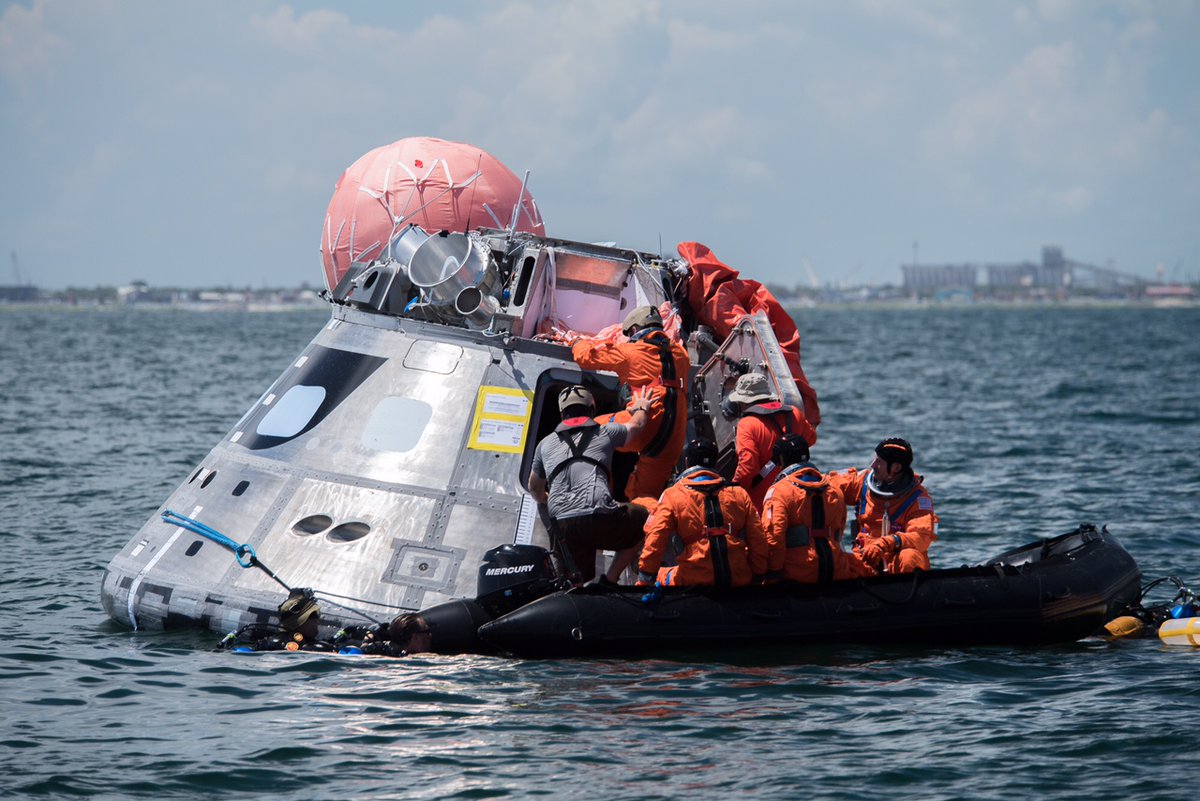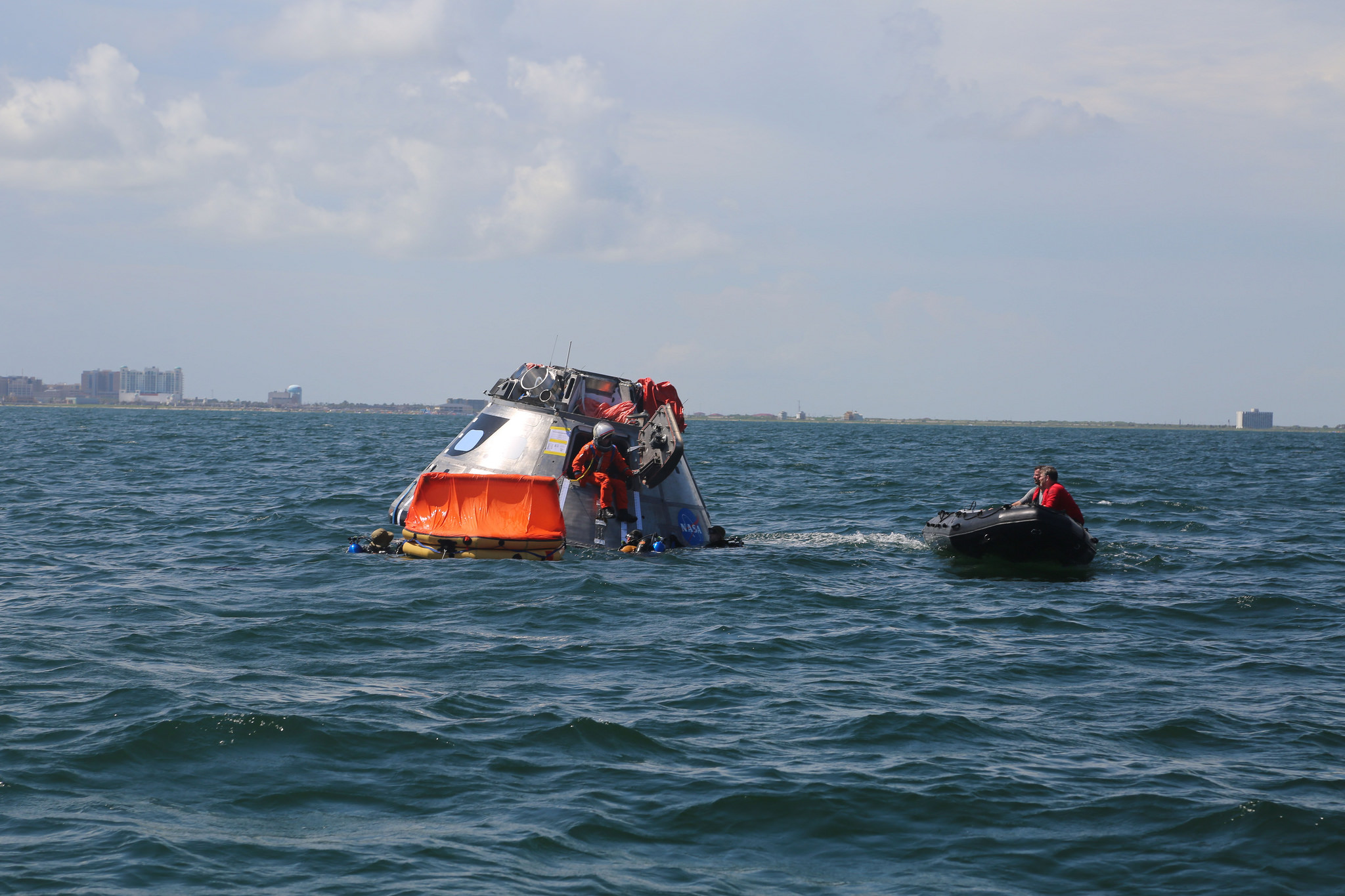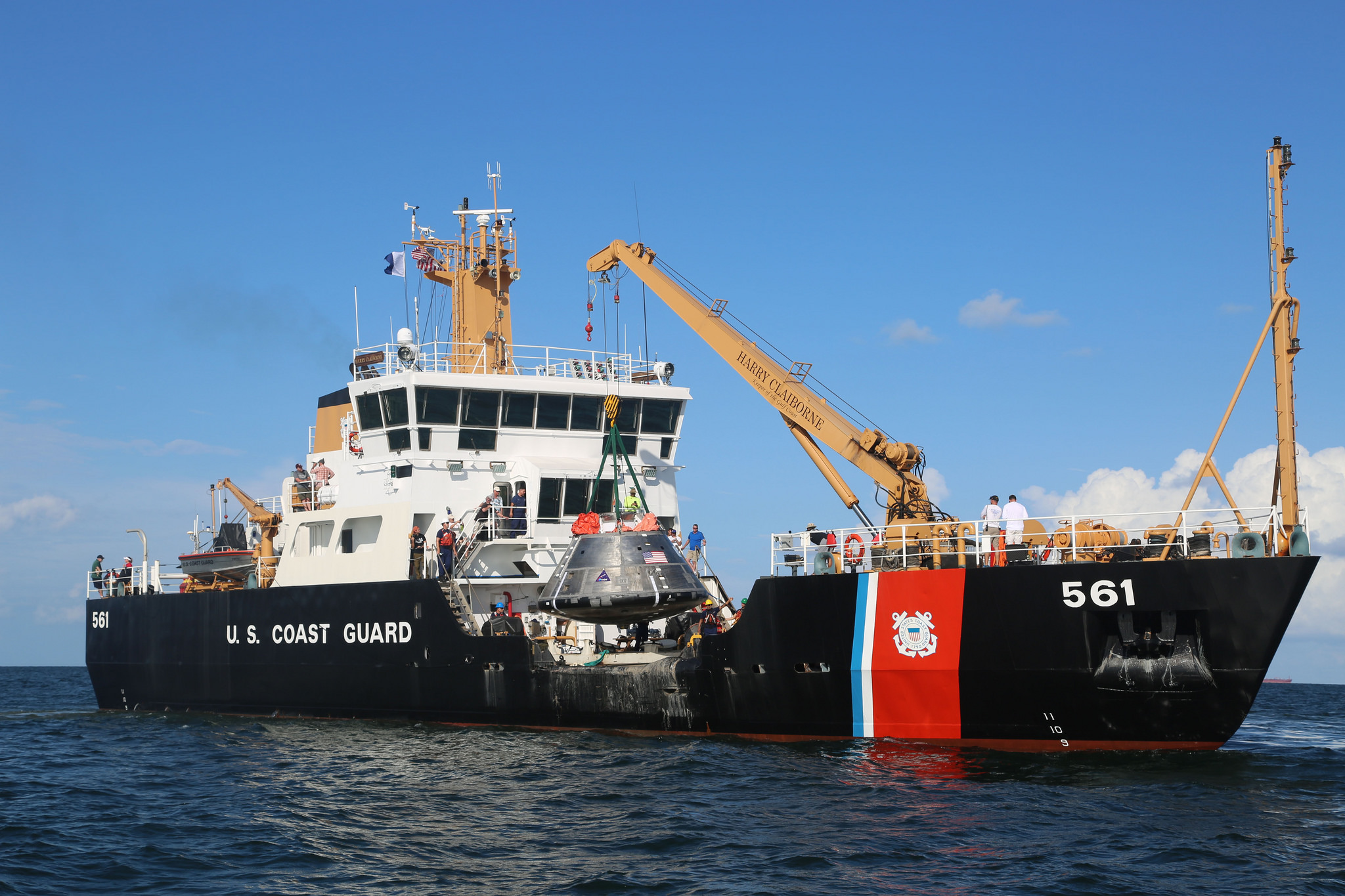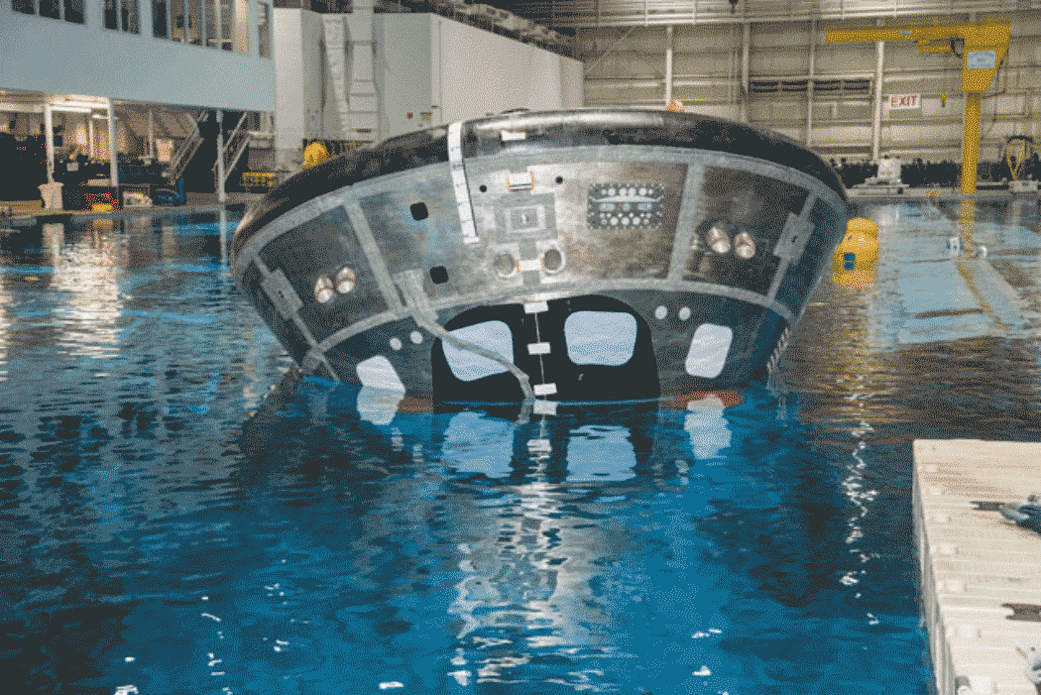Astronauts Test Orion Spacecraft Exit Methods in the Gulf of Mexico (Photos)

If NASA wants to safely send astronauts on missions into deep space in the new Orion space capsule, the space agency must first tackle some critical safety tests while its astronauts bob around in the open ocean.
Last week NASA and the U.S. Coast Guard cruised out into the Gulf of Mexico near Galveston, Texas, to test out the exit procedures for crews returning from space in the Orion capsule.

Today's astronauts return from the International Space Station by parachuting down to Earth in one of Russia's Soyuz space capsules and touching down on land somewhere in Kazakhstan. But the Orion spacecraft is designed to splash down into the Pacific Ocean.
Once the capsule is in the water, the crew would ideally wait until a recovery team arrived to help them out of the capsule and transport them back to dry land. Their spacecraft is designed to sustain a crew for 24 hours after splashdown. [The Orion Space Capsule: NASA's Next Spaceship (Photos)]
If something were to go wrong during Orion's return to Earth – a fire or a leak, for example – the crew would need to be able to climb out of the capsule and get to safety without the help of a recovery team. This would involve opening the top hatch, hopping into the water and inflating a bright-orange raft.

Escaping the capsule without any help would not be easy. After spending an extended period of time in an environment without gravity, the human body gets weaker. Bone and muscle mass deteriorates in space, which is why astronauts who return from the space station are often placed in wheelchairs after recovery crews help them out of the hatch.
"Astronauts returning to Earth in Orion will have spent many days in space, and we want to make sure the last part of their journey goes smoothly no matter what kind of conditions they land in," Tom Walker, the rescue and recovery lead for Orion at NASA's Johnson Space Center in Houston, said in a statement. "Our testing in the Gulf of Mexico gives us an opportunity to practice and evaluate our plans and hardware for how to get crew out of Orion as safely and efficiently as possible."
Get the Space.com Newsletter
Breaking space news, the latest updates on rocket launches, skywatching events and more!

To account for all of the possible outcomes of Orion's splashdown, NASA has come up with several different exit procedures. This approach "gives recovery personnel and mission controllers flexibility to account for the crew’s health, weather and the condition of the recovery personnel and equipment in the area in real-time," NASA officials said.
Orion is currently scheduled to launch on its first crewed mission between 2021 and 2023. It will lift off atop NASA's brand-new Space Launch System (SLS) rocket and will venture to the moon, Mars, asteroids and beyond.
Email Hanneke Weitering at hweitering@space.com or follow her @hannekescience. Follow us @Spacedotcom, Facebook and Google+. Original article on Space.com.
Join our Space Forums to keep talking space on the latest missions, night sky and more! And if you have a news tip, correction or comment, let us know at: community@space.com.

Hanneke Weitering is a multimedia journalist in the Pacific Northwest reporting on the future of aviation at FutureFlight.aero and Aviation International News and was previously the Editor for Spaceflight and Astronomy news here at Space.com. As an editor with over 10 years of experience in science journalism she has previously written for Scholastic Classroom Magazines, MedPage Today and The Joint Institute for Computational Sciences at Oak Ridge National Laboratory. After studying physics at the University of Tennessee in her hometown of Knoxville, she earned her graduate degree in Science, Health and Environmental Reporting (SHERP) from New York University. Hanneke joined the Space.com team in 2016 as a staff writer and producer, covering topics including spaceflight and astronomy. She currently lives in Seattle, home of the Space Needle, with her cat and two snakes. In her spare time, Hanneke enjoys exploring the Rocky Mountains, basking in nature and looking for dark skies to gaze at the cosmos.









